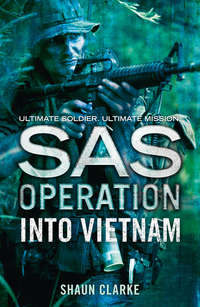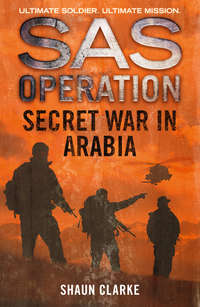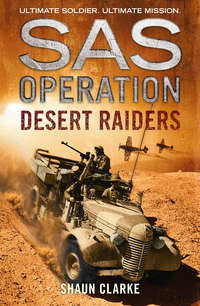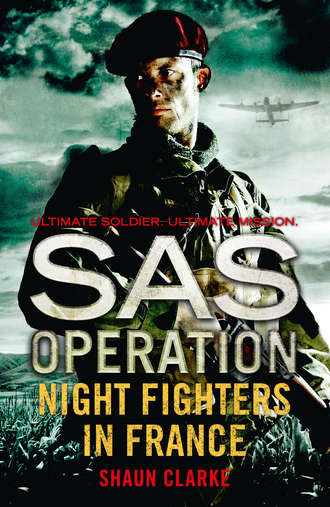
Полная версия
Night Fighters in France

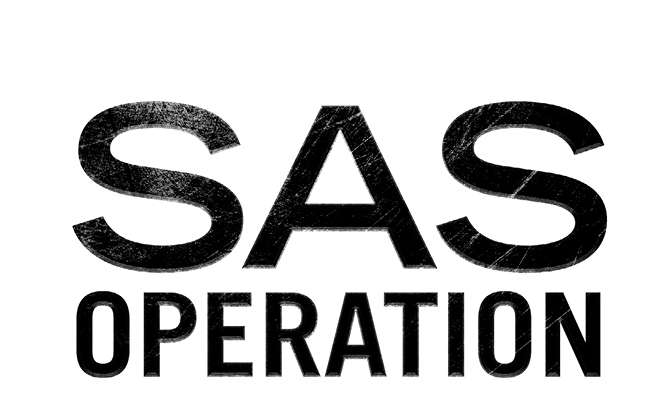
Night Fighters in France
SHAUN CLARKE

Published by HarperCollinsPublishers Ltd
1 London Bridge Street
London SE1 9GF
www.harpercollins.co.uk
First published in Great Britain by 22 Books/Bloomsbury Publishing plc 1994
Copyright © Bloomsbury Publishing plc 1994
Cover layout design © HarperCollinsPublishers Ltd 2015
Cover photographs © Collaboration JS / Arcangel Images (soldier); Shutterstock.com (aeroplane)
Shaun Clarke asserts the moral right to be identified as the author of this work.
A catalogue copy of this book is available from the British Library.
This novel is entirely a work of fiction. The names, characters and incidents portrayed in it are the work of the author’s imagination. Any resemblance to actual persons, living or dead, events or localities is entirely coincidental.
All rights reserved under International and Pan-American Copyright Conventions. By payment of the required fees, you have been granted the non-exclusive, non-transferable right to access and read the text of this e-book on screen. No part of this text may be reproduced, transmitted, down-loaded, decompiled, reverse engineered, or stored in or introduced into any information storage and retrieval system, in any form or by any means, whether electronic or mechanical, now known or hereinafter invented, without the express written permission of HarperCollins.
Source ISBN: 9780008155247
Ebook Edition © December 2015 ISBN: 9780008155254
Version: 2015-11-12
Contents
Cover
Title Page
Copyright
Prelude
Chapter 1
Chapter 2
Chapter 3
Chapter 4
Chapter 5
Chapter 6
Chapter 7
Chapter 8
Chapter 9
Chapter 10
Chapter 11
Chapter 12
Chapter 13
Chapter 14
Chapter 15
Chapter 16
OTHER TITLES IN THE SAS OPERATION SERIES
About the Publisher
Prelude
Operation Overlord, the Allied invasion of Europe, commenced on the night of 5 June 1944 with the concentrated bombing of German positions on the north coast of France by 750 heavy bombers, an onslaught against the Normandy defence batteries by hundreds of medium bombers, the clearing of broad sea highways thirty miles long by 309 British, 22 American and 16 Canadian minesweepers, and landings by parachute and glider in the vicinity of the east bank of the Caen canal and astride the Cherbourg peninsula. Fires were already burning all along the coast of Normandy, acting as beacons to the invasion fleet, when, just as dawn broke on D-Day, 6 June, Fortresses and Liberators of the US 8th and 9th Air Forces, covered by an umbrella of fighters, dropped 2400 tons of bombs on the British beaches and nearly 2000 tons on the American beaches.
Shortly after dawn, the warships heading for Normandy opened fire with their big guns, covering the coastline with spectacular flashes and clouds of brownish cordite while the British ‘Hunt’-class destroyers raced in to engage the enemy’s shore batteries. To the west, American destroyers were doing the same, with the heavier guns of their battleships hurling fourteen, fifteen and sixteen-inch shells on to the beaches and the German fortifications beyond them. The final ‘softening up’ was achieved by rocket-firing boats which disappeared momentarily behind sheets of flame as their deadly payload rained down on the beaches, adding to the general bedlam by causing more mighty explosions, which threw up mushrooms of flying soil and swirling smoke.
At 0630 hours American forces swarmed on to the western shores, where a broad bay sweeps round to Cherbourg. They were followed fifty minutes later by British and Canadian troops, put ashore by more than 5000 landing-craft and ‘Rhino’ ferries on the eastern beaches. Many of the assault craft were caught by sunken angle-irons and, with their bottoms ripped open, foundered before they made the shore; others were blown up by mines.
Nevertheless the men, each heavily burdened with steel helmet, pack and roll, two barracks bags, rations, two cans of water, gas mask, rifle and bayonet, bandoliers of ammunition, hand-grenades and, in many cases, parts of heavy weapons such as machine-guns and mortars – a total weight never less than 132lb – continued to pour ashore on both the eastern and western fronts, advancing into the murderous rifle and machine-gun fire of the Germans still holed up in their concrete bunkers overlooking the beaches. Likewise savaged by a hail of enemy gunfire were the Royal Engineers and American sappers, who continued bravely to explode buried German mines to create ‘safe’ paths for the advancing Allied troops.
Within minutes, the beaches, obscured in a pall of smoke, were littered with dead bodies and black shell holes. The sounds of machine-guns and mortars increased the already appalling din. Out at sea, the guns of Allied cruisers, battleships and destroyers continued a bombardment that would account for 56,769 shells of various calibres. Simultaneously, the Air Force continued to pound the enemy positions: more than 1300 Liberators and Fortresses, escorted by fighters, bombed the German positions for another two and a half hours.
By evening the Germans overlooking the beach had been pushed well back and Allied forces were as far as six to eight miles inland. While British Commandos and American Rangers were having spectacular successes on their separate fronts, a Royal Marine Commando, even after the loss of five of its fourteen landing-craft, fought through Les Roquettes and La Rosière, quelled several German machine-gun and mortar nests, and finally captured Port-en-Bessin. There, making contact with the Americans, it linked up the whole Allied front in Normandy and paved the way for the major push through France.
Strategically vital bridges, locks and canals soon fell to the Allies and in many small towns and villages French men and women emerged from rubble and clouds of dust to wave the tricolour and rapturously greet their liberators.
Even though German resistance was heavy, by the evening of the first day a bridgehead twenty-five miles wide had been established, forming a continuous front, with American forces in the Cotentin peninsula and just east of the River Vire, and Canadian and British troops on the left flank. To the east, British troops advanced to within three miles of Caen, while to the west US forces penetrated to a depth of five miles south of Colleville and crossed the River Aure to the east of Trévières. Two days later, Isigny, six miles from Carentan, was captured. Carentan itself fell to US troops on the 12th.
Violent fighting broke out around Caen, with both sides changing positions constantly, but the Americans entered St-Sauveur-le-Vicomte on the 16th, reached the main defences of Cherbourg on the 21st and, after fierce fighting, but with the aid of an intensive aerial bombardment and artillery fire, captured the town on the 27th, taking 20,000 German prisoners of war.
By this time, British troops had cut the road and railway between Caen and Villers-Bocage to reach the River Odon at a point some two miles north of Evrecy. A strong bridgehead was established which resisted the counter-attacks of eight Panzer and SS Panzer divisions. When the Germans retreated, the bridgehead was secured and enlarged.
On 3 July, having cleared the north-west tip of the Cotentin peninsula, the US 1st Army advanced in a blinding rainstorm on a wide front south of St-Sauveur-le-Vicomte. By the following day they had captured the high ground to the north of La Haye-du-Puits and, after eight days of fierce fighting, finally captured the town. Simultaneously, other US troops were battling their way up the steep, wooded slopes of the Forêt de Mont Castre and advancing down the Carentan-Périers road to force a passage across the Vire in the direction of St-Jean-de-Daye, which fell on the 8th. By the 11th they were advancing through waterlogged country to take up positions within three miles of the vital German communications centre of St Lô.
British and Canadian forces, meanwhile, had attacked eastwards towards Caen, and early on the 8th, after a concentrated bombardment from heavy and medium bombers, launched an attack that carried them to the outskirts of the town. Supported by sustained fire from massed artillery and British ships, they took the northern part of the town by nightfall.
St Lô fell to the US 1st Army on 18 July after eight days of bloody fighting. Following the capture of the northern part of Caen, the British 2nd Army, under Montgomery, launched an attack southeast of the town. Over 2000 British and American heavy and medium bombers dropped nearly 8000 tons of bombs in an area of little more than seventy square miles, blasting a 7000-yard-wide passage that enabled armoured formations to cross the River Orne by specially constructed bridges and drive strong wedges in the direction of Cagny and Bourguébus.
While this armoured advance was temporarily halted by a combination of determined enemy resistance and violent rainstorms, Canadian troops were successfully clearing the southern suburbs of Caen and British infantry were thrusting out eastwards towards Troarn to clear several villages in the area. A further Canadian attack across the Orne, west of Caen, resulted in the capture of Fleury and the clearing of the east bank of the river for three miles due south of the latter town.
A week after the British 2nd Army’s offensive began, the US 1st Army attacked west of St Lô, captured Marigny and St-Gilles, then fanned out in three columns, west, south and south-west, to capture Canisy, Lessay, Périers and Coutances, and join up with US forces advancing from the east. By nightfall of the 30th, American armour had swept through Bréhal and, the following day, captured Avranches and Graville. Further east, Bérigny was captured.
Aiding the American success were two attacks in the British sector: one by the Canadians down the Caen-Falaise road, the other in the area of Gaumont, where, after a heavy air bombardment, a British armoured and infantry force secured Cahagnes and Le Bény-Bocage. Five more villages, including the strategically important Evrecy and Esquay, southwest of Caen, were captured on 4 August and Villers-Bocage, which was by now in ruins, the next day.
American armoured columns reached Dinan that same week, turned south and, heading for Brest, liberated several Breton towns en route. Rennes, the capital of Brittany, was captured on the 4th and the River Vilaine was reached two days later, sealing off the Brittany peninsula. The fall of Vannes, Lorient, St-Malo, Nantes and Angers soon followed, and US patrols had crossed the Loire by 11 August.
With British and Canadians, plus the 1st Polish Armoured Division, advancing from the north, and the Americans, along with the French 2nd Armoured Division, closing in from the west and south, a large part of the German 7th Army was almost surrounded. Their only escape route – the narrow Falaise-Argentan Gap – was sealed by the Americans advancing from Le Mans, which they had liberated on 9 August.
By 19 August, the Falaise Gap was closed and, after a terrible slaughter of German troops, whose dead choked the village streets and surrounding fields, the sad remnants of von Kluge’s 7th Army were taken prisoner.
Four days earlier, on 15 August, General Eisenhower had taken command of the Allied Expeditionary Force, leaving Montgomery at the head of the 21st Army Group, which consisted of General Dempsey’s British 2nd Army and General Crerar’s 1st Canadian Army. Lieutenant-General Omar Bradley was at the head of the 12th Army Group, comprising General Hodge’s US 1st Army and General Patton’s 3rd Army. The latter was driving towards Dijon as other Allied forces advanced from the south.
To aid the advance of Patton’s 3rd Army, the Allies planned airborne landings in the Orléans Gap, and to soften the enemy before the landings, they decided to drop a squadron of men and jeeps by parachute in the area of Auxerre, central France. The squadron’s task would be to engage in a series of daring hit-and-run night raids against German positions to distract the enemy from the landings taking place elsewhere.
While the Allied advance was under way, the French Forces of the Interior (FFI) were seizing high ground in advance of the American armour and engaging in guerrilla warfare, to harass the Germans and protect Allied lines of communication. In central France, the Maquis – Frenchmen who had fled from the Germans and were living in makeshift camps in the forest – were conducting sabotage missions behind enemy lines. Among their tasks were blowing up bridges, putting locomotives out of action, derailing trains, and cutting long-distance underground communications cables between Paris and Berlin. Montgomery, knowing of these activities, decided that the men chosen for the parachute drop should establish a base and make contact with the Maquis.
The men deemed most suitable for this mission, known as Operation Kipling, were those of C Squadron, 1 SAS, based in Fairford, Gloucestershire. Formed in North Africa in 1941, 1 SAS had already gained a reputation for uncommon daring. That reputation would be put to the test over the weeks to come.
1
The men crowding into the briefing room in their heavily guarded camp near Fairford, Gloucestershire on 10 August 1944 were not ordinary soldiers. They were men of uncommon ability, members of the Special Air Service (1 SAS), which had been formed in North Africa in 1941 as a self-contained group tasked with clandestine insertion, long-range reconnaissance patrols behind enemy lines, and sabotage and intelligence-gathering missions, often with the Long Range Desert Group (LRDG).
Originally, 1 SAS had been conceived and formed by Lieutenant David Stirling, a former Scots Guard who, having joined No. 8 Commando, was promptly dispatched to the Middle East on attachment to Colonel Robert Laycock’s Layforce. After taking part in many relatively unsuccessful, large-scale raids against German positions along the North African coast, Stirling became convinced that raids with small, specially trained units would be more effective. In the spring of 1941, hospitalized in Alexandria after a parachute accident, he passed the time by formulating his plans for just such a unit, based on the belief that 200 men operating as five-man teams could achieve the surprise necessary to destroy several targets on the same night. Subsequently, with the support of Deputy Chief of Staff General Neil Ritchie, L Detachment, Special Air Service Brigade, was born.
The new SAS Brigade’s first raids behind enemy lines in November 1941, which involved parachute drops, were a complete failure. However, later raids against Axis airfields at Sirte, Tamit, Mersa Brega and Agedabia, during which the men were driven to their targets and returned to base by the highly experienced LRDG, were remarkably successful, gaining L Detachment a legendary reputation. By October 1942, when L Detachment was given full regimental status as 1 SAS, it had grown to include the 390 troops of the existing 1 SAS, the French Squadron of 94 men, the Greek Sacred Squadron of 114 men, the Special Boat Section of 55 men and the Special Interrogation Group.
Lieutenant Stirling was captured in January 1943, incarcerated in Gavi, Italy, from where he escaped no less than four times, then transferred to the German high-security prison at Colditz. In April 1943, while Stirling was embarking on a series of daring escapes from Gavi, the French and Greek Squadrons were returned to their respective national armies, the Special Boat Section became a separate unit, the Special Boat Squadron (SBS), under the command of Major Jellicoe, and 1 SAS became the Special Raiding Squadron. In May 1943 2 SAS came into existence and, later that year, the Special Raiding Squadron reverted to the title of 1 SAS. Finally, in January 1944, the SAS Brigade was formed under the umbrella of 1st Airborne Corps. It consisted of 1 and 2 SAS, 3 SAS (3 French Parachute Battalion), 4 SAS (4 French Parachute Battalion), 5 SAS (Belgian Independent Parachute Company), HQ French Demi-Brigade, F Squadron, GHQ Liaison Regiment and 20 Liaison HQ, which was the SAS link with the Free French.
The men crowding into the briefing room at Fairford, however, were the British founder members of the SAS Brigade, having joined it in North Africa in 1941 and taken part in its first daring raids. The ‘Head Shed’ in charge of the briefing and now taking up his position in front of the covered blackboard on a raised platform was the squadron commander, Captain Patrick ‘Paddy’ Callaghan, No. 3 Commando, an accomplished boxer and Irish rugby international who had, at the time of the formation of L Detachment, been languishing in a military-police cell in Cairo, waiting to be court-martialled. Though normally an amiable, courteous man, Callaghan had a fiery temper and had often landed in trouble because of it. Nevertheless, he was one of the most able officers in the SAS, often mentioned in dispatches for his bravery in action. Thus, though he had not been promoted since 1941, his abilities had been officially recognized when his superiors put him in charge of C Squadron.
Standing beside the heavily built Captain Callaghan was his slim, handsome second in command, former Lieutenant, now Captain, Derek ‘Dirk’ Greaves. Like Stirling, Greaves had been a member of No. 9 Commando, posted to General Wavell’s Middle Eastern Army on attachment to Layforce. With Layforce he had taken part in raids against the Axis forces in Rhodes, Crete, Syria, around Tobruk and all along the seaward side of Libya’s Cyrenaica Desert, before being wounded, meeting Lieutenant Stirling in the Scottish Military Hospital in Alexandria and becoming his right-hand man in the formation of L Detachment. Single when with Layforce, he had since married his Scottish fiancée, Mary Radnor, and now missed her dreadfully, though he took comfort from the knowledge that she was living safely in the family home in Edinburgh, and now eight months pregnant with their first child.
‘All right, men, quieten down!’ Captain Greaves shouted. ‘We haven’t got all day!’
When the spirited babble continued even as Captain Callaghan was taking up his position in the middle of the dais, Sergeant Ralph Lorrimer bawled: ‘Shut your mouths and let the boss speak! Are you men deaf, or what?’
Formerly of the Dorset Regiment, then with the LRDG, an expert in desert tracking and warfare, but also unbeatable with the Browning 12-gauge autoloader, Lorrimer had been approached by Stirling and Greaves to join L Detachment when he was spending his leave in Tiger Lil’s brothel in Cairo’s notorious Sharia el Berka quarter. He was therefore respected by the men for more reasons than one and, when he shouted for them to be silent, they promptly obeyed and settled down to listen to the Head Shed.
‘Can I just open,’ Captain Callaghan asked rhetorically, ‘by saying that I know how frustrated you men have been, stuck here in Gloucestershire, when the battle for Europe is under way in France.’
‘Damned right, boss!’ Lance-Corporal Jack ‘Jacko’ Dempster cried out. ‘The best bloody brigade in the British Army and they leave us sitting here on our arses while lesser men do all the fighting. A right bunch of prats, that’s how we feel.’
As the rest of the men burst into laughter or murmurs of agreement, Sergeant Lorrimer snapped: ‘We don’t need your bloody nonsense at this time in the morning, Jacko. Just shut up and let the boss speak or I’ll have you out in a guard box.’
‘Yes, Sarge!’ the lance-corporal replied with a smirk.
Nevertheless, Lorrimer was grinning too, for he had a great deal of respect for Dempster and the rest of the ‘other ranks’. Jacko, as everyone knew him, was just one of the many men in the room who had been founder members of L Detachment when it came into existence in 1941. Known as the ‘Originals’, they included Sergeants Bob Tappman, Pat Riley and Ernie Bond; Corporals Jim Almonds, ‘Benny’ Bennett, Richard ‘Rich’ Burgess and Reg Seekings; and former Privates, now Lance-Corporals, Neil Moffatt, Harry ‘Harry-boy’ Turnball and, of course, Jacko Dempster.
Each one of these men had gone into the North African desert with minimal knowledge of desert warfare, learnt all there was to know from the Long Range Desert Group, and then taken part in daring, mostly successful, raids against Axis airfields located well behind enemy lines. Remarkably, only one of them – the revered Lieutenant John ‘Jock’ Steel Lewes – had died during those raids. As a brutal climax to the final raid of that period – a simultaneous attack by three different groups against Sirte, Tamit and Nofilia – the survivors, all now present in the briefing room, had made it back to the forward operating base after an epic trek across the desert, most of them practically crawling into their camp at Jalo Oasis. Though they never openly said so, they were proud of what they had accomplished and stuck together because of it, keeping themselves slightly apart from the other, more recent arrivals in the SAS Brigade.
Furthermore, as Sergeant Lorrimer knew only too well, the Originals had developed a low boredom threshold, and this had caused immense frustration when, at the end of 1943,1 SAS were returned to Scotland for training and operations in northern Europe. Initially they were kept busy establishing a base near the remote village of Darvel, east of Kilmarnock; but in May the following year the SAS Brigade had been moved to Fairford, where the men had been able to do little more than constant retraining in preparation for Operation Overlord. Small wonder they had become even more frustrated when D-Day passed without them. Now Lorrimer was hoping that what the CO was about to tell them would make amends for that.
‘Well, gentlemen,’ Captain Callaghan continued, ‘to end the suspense, we’ve been assigned a specific task in France and it commences forthwith.’
When the cheering, clapping and whistling had died down, the captain continued: ‘At this moment, General Patton’s 3rd Army is driving south towards Dijon.’
‘Mad Dog Patton!’ shouted Corporal Richard ‘Rich’ Burgess.
‘I wouldn’t let him hear you say that, Corporal,’ Callaghan admonished him, ‘because although he may seem mad to you, he’s a damned good soldier and proud of it.’
‘Sorry, boss.’
‘Anyway, to aid Patton’s advance, Montgomery has asked for airborne landings in the Orléans Gap.’
‘That’s us?’ Lance-Corporal Harry ‘Harry-boy’ Turnball asked hopefully.
‘No,’ Callaghan replied. ‘Our task is to soften up the enemy before the landings – and to distract them from the landings – by engaging in a series of hit-and-run raids against their positions. For this mission, Operation Kipling, you and your jeeps will be inserted by parachute in central France. Once you’ve all been landed, you’ll establish a base, lie low and make contact with the Maquis.’
‘Frogs?’ Lance-Corporal Neil Moffatt asked dubiously.


